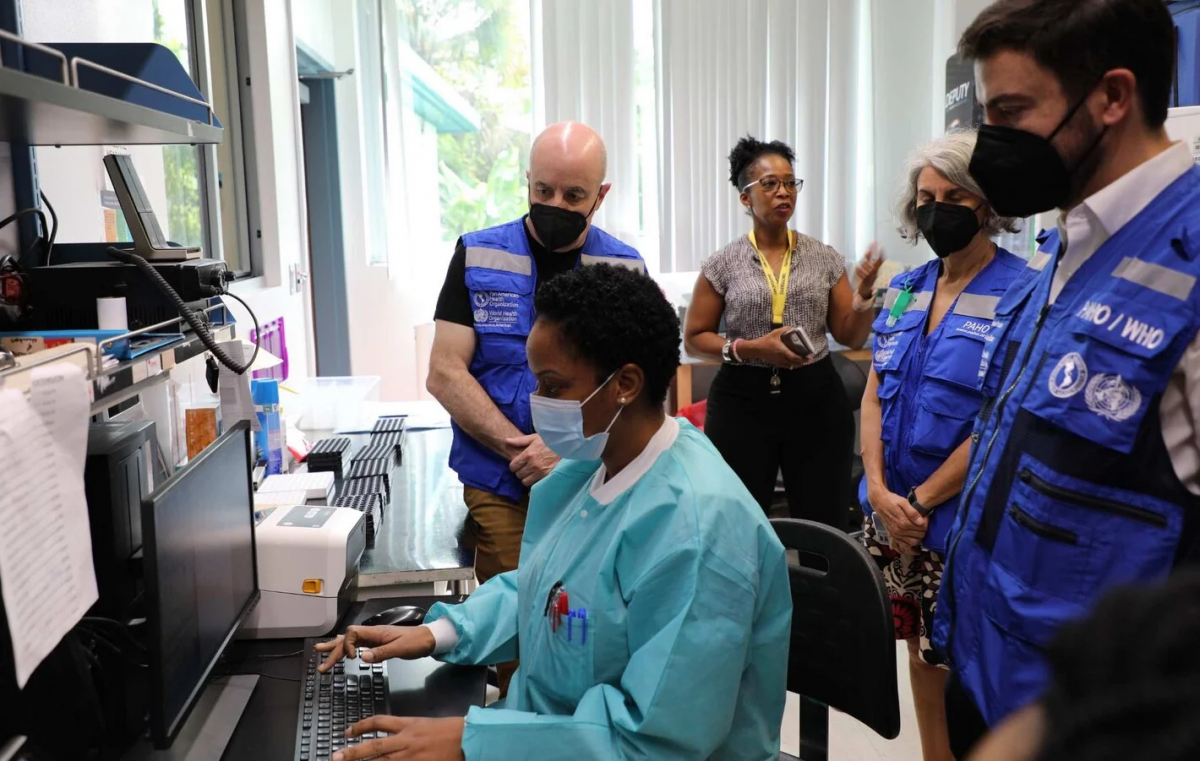PAHO platform brings health monitoring of chronic diseases to remote populations

The Pan American Health Organization (PAHO) has developed a digital platform to bring telehealth services to remote populations in Latin American and Caribbean countries, making telemedicine the “new normal” for healthcare workers and patients managing chronic diseases.
Based on Open-Source technology, PAHO’s All-in-ONE Telehealth platform was developed in 2022 thanks to the financial contribution from the United States Government and has initially been piloted in Trinidad and Tobago.
“The aim of the platform is to improve patient outreach and follow-up, with an emphasis on continuity of care for people with noncommunicable diseases (NCDs),” said Sebastian Garcia Saiso, Director, Department of Evidence and Intelligence for Action in Health at PAHO.
NCDs are the leading cause of death and disability in the world, accounting for 71% of all deaths globally. In the Region of the Americas, 5.5 million deaths are due to NCDs, which include cancers, cardiovascular disease, diabetes and chronic lung disease. As they are chronic, they require continuous care. Worsening conditions, if left unchecked, can take a huge toll on individuals and their families.
The platform can assist diabetic or hypertensive patients in managing and monitoring their disease. It also allows health workers at remote points to create an “advance triage” to refer patients before they undertake necessary travel to a health center.
“The health facility where I receive care called me to ask me questions. How am I feeling? Do I need medicine? When I'm ready, they have a prescription in my file and there is no need to travel to the health center, my prescription will be sent to me,” said Sue Ann Peters, a telehealth patient managing a chronic condition in Trinidad and Tobago.
“The instalment of the telehealth platform at key referral points will change the lives of patients who in the past had no access to health monitoring when they most needed it,” said Marcelo D’Agostino, Senior Advisor, Information Systems and Digital Health at PAHO.
Training for health technicians and professionals, including in simulation and role-playing exercises, is also a key component of the platform. This allows authorities to offer health workers diverse learning strategies, and to best judge when to use telemedicine or hybrid care, with the patient receiving a combination of telehealth and in-person attention at a local clinic or hospital.
The platform integrates applications such as instant messaging, conversational bots (chatbots), patient medical records and digital prescriptions. It can also send an alert when a patient’s test results are outside a normal range.
“The All-in-One platform is a vital component of the digital transformation in health in our region, not only in preventing and controlling major NCDs and their risk factors but improving the quality of life of patients with chronic disorders,” said Garcia Saiso.
PAHO’s goal in increasing universal access to healthcare is to make the platform available as a public good, so that all countries in the region can benefit from it.
“Since the COVID 19 pandemic, both patients as well as health professionals are more eager now to engage in the use of the benefits of telemedicine,” explained Erica Wheeler, the PAHO representative in Trinidad and Tobago.
This year, a rollout of the All-in-One platform is planned for The Bahamas, El Salvador, Honduras, Peru, Suriname, Dominica, Uruguay, Panama, and Nicaragua.



